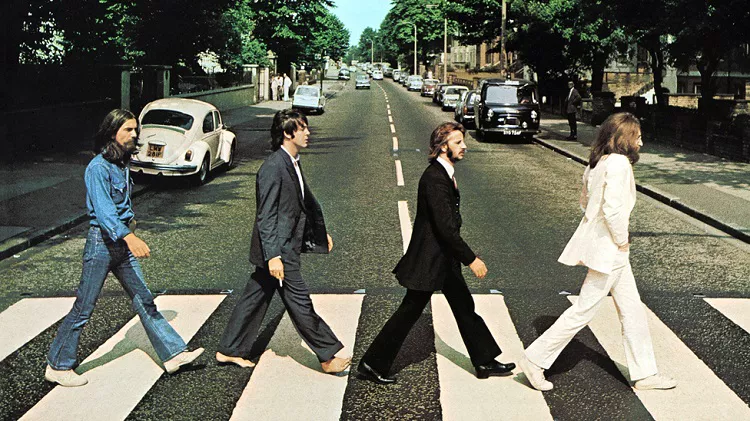Psychedelic rock music is a genre that emerged in the mid-1960s, characterized by its innovative use of sound to replicate and enhance the mind-altering experiences associated with psychedelic drugs. It is a blend of various musical styles and technologies, incorporating elements from rock, blues, folk, and even Indian classical music. This genre is known for its experimental approach, both in terms of musical composition and lyrical content. This article delves into the history, characteristics, notable artists, and cultural impact of psychedelic rock music.
1. History and Origins
Psychedelic rock originated in the United States and the United Kingdom during the mid-1960s, a period marked by significant social and cultural changes. The genre was heavily influenced by the growing popularity of the counterculture movement, which advocated for peace, love, and expanded consciousness. This movement was also closely associated with the use of psychedelic drugs such as LSD, which were believed to unlock new realms of perception and creativity.
Early Influences
The roots of psychedelic rock can be traced back to the blues and folk music scenes of the early 1960s. Artists like Bob Dylan and The Byrds began experimenting with electric instruments and unconventional song structures, laying the groundwork for the genre. The Beatles’ album “Rubber Soul” (1965) is often cited as one of the first mainstream records to feature psychedelic elements, such as sitar and lyrics that reflected a more introspective and surreal mindset.
The Psychedelic Explosion
The genre truly exploded into mainstream consciousness with the release of seminal albums like The Beatles’ “Revolver” (1966), The Beach Boys’ “Pet Sounds” (1966), and Jefferson Airplane’s “Surrealistic Pillow” (1967). These albums showcased innovative studio techniques, such as backward tapes, reverb, and unconventional instrumentation, which became hallmarks of psychedelic rock.
2. Musical Characteristics
Psychedelic rock is distinguished by its unique approach to sound and structure. It often features extended instrumental solos, complex time signatures, and a wide array of effects designed to create an otherworldly listening experience.
Instrumentation and Sound
A hallmark of psychedelic rock is its diverse instrumentation. Standard rock instruments like electric guitars, bass, and drums are often augmented with non-traditional instruments such as sitars, Mellotrons, and theremins. Guitars are frequently processed with effects like reverb, delay, and distortion to produce a “trippy” sound. Additionally, studio techniques such as tape manipulation and overdubbing are commonly used to create layers of sound.
Song Structure and Lyrics
Psychedelic rock often eschews the traditional verse-chorus-verse structure in favor of more freeform compositions. Songs may include long instrumental passages, abrupt changes in tempo, and eclectic influences ranging from jazz to classical music. Lyrically, psychedelic rock is known for its abstract, surreal, and often poetic themes. Songs may explore topics such as cosmic consciousness, inner journeys, and the nature of reality.
3. Notable Artists and Albums
Several artists and albums have become synonymous with psychedelic rock, each contributing to the genre’s development and enduring legacy.
The Beatles: The Beatles played a pivotal role in popularizing psychedelic rock with albums like “Revolver” and “Sgt. Pepper’s Lonely Hearts Club Band” (1967). Songs such as “Tomorrow Never Knows” and “Lucy in the Sky with Diamonds” exemplify the band’s innovative use of studio techniques and lyrical exploration of altered states of consciousness.
Pink Floyd: Pink Floyd’s early work, particularly the album “The Piper at the Gates of Dawn” (1967), is a quintessential example of British psychedelic rock. The band’s experimental approach to soundscapes and their incorporation of surrealistic themes set a standard for the genre.
Jefferson Airplane: Jefferson Airplane was one of the leading American bands in the psychedelic rock scene. Their album “Surrealistic Pillow,” featuring hits like “White Rabbit” and “Somebody to Love,” captured the spirit of the 1960s counterculture and the psychedelic experience.
The Grateful Dead: The Grateful Dead’s eclectic style and improvisational live performances made them a cornerstone of the psychedelic rock movement. Albums like “Anthem of the Sun” (1968) and “Aoxomoxoa” (1969) showcase the band’s experimental sound and their deep connection to the psychedelic culture.
4. Cultural Impact
Psychedelic rock had a profound impact on both music and culture, influencing everything from fashion to social movements.
Counterculture and Social Change
The genre became the soundtrack of the 1960s counterculture, embodying the ideals of peace, love, and expanded consciousness. Music festivals like the Monterey Pop Festival (1967) and Woodstock (1969) brought psychedelic rock to a wider audience and cemented its association with the era’s social and political movements.
Fashion and Art
Psychedelic rock also influenced fashion and visual art. The vibrant, colorful clothing styles and intricate, surrealistic album covers became iconic symbols of the era. Artists like Peter Max and the collective known as The Fool created visually stunning works that complemented the music’s mind-expanding themes.
Legacy and Revival
While the peak of psychedelic rock was relatively brief, its influence can still be felt today. The genre paved the way for progressive rock in the 1970s and continues to inspire contemporary artists. Bands like Tame Impala and MGMT have incorporated psychedelic elements into their music, leading to a resurgence of interest in the genre.
See Also: Fats Domino: An Unexpected Influence on Country Music
Conclusion
Psychedelic rock music is a genre that broke new ground in the 1960s with its innovative use of sound, experimental song structures, and introspective lyrical themes. It emerged from the cultural and social upheaval of the time, offering listeners a musical journey that mirrored the mind-expanding experiences of psychedelic drugs. With its roots in the counterculture movement, psychedelic rock not only transformed the landscape of music but also left an indelible mark on fashion, art, and societal norms. Its legacy continues to inspire new generations of musicians and listeners, ensuring that the spirit of psychedelic rock remains alive and well.

